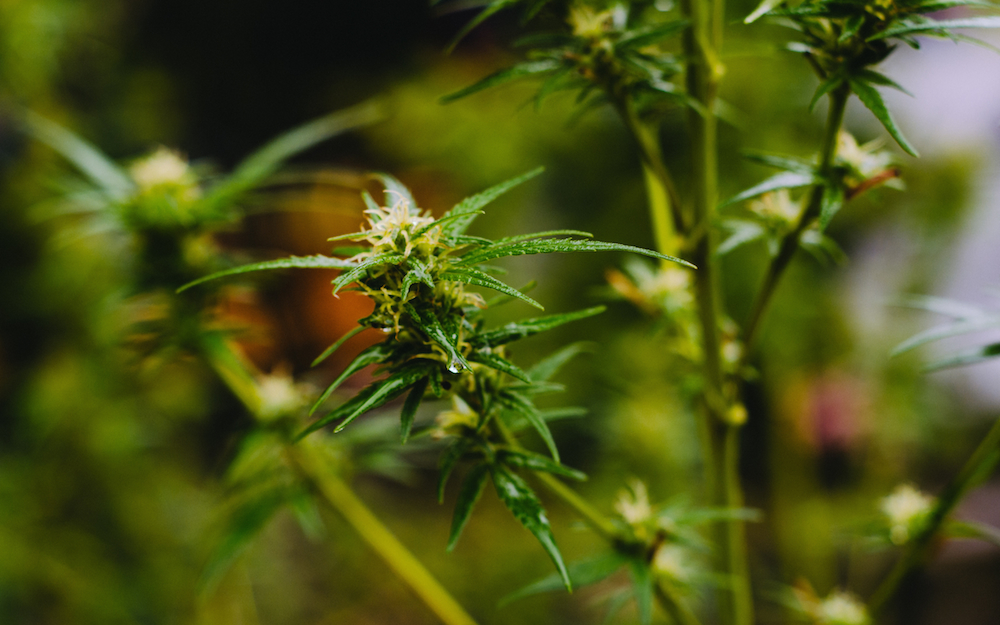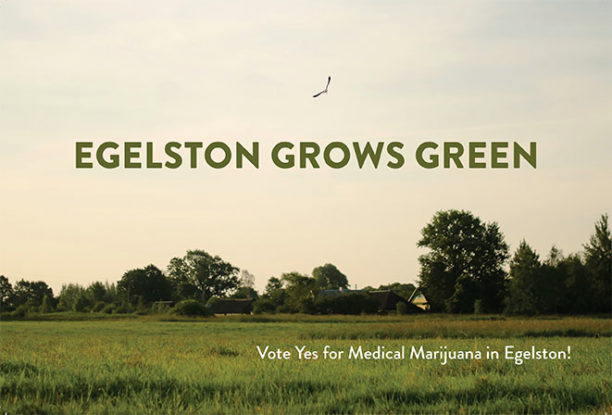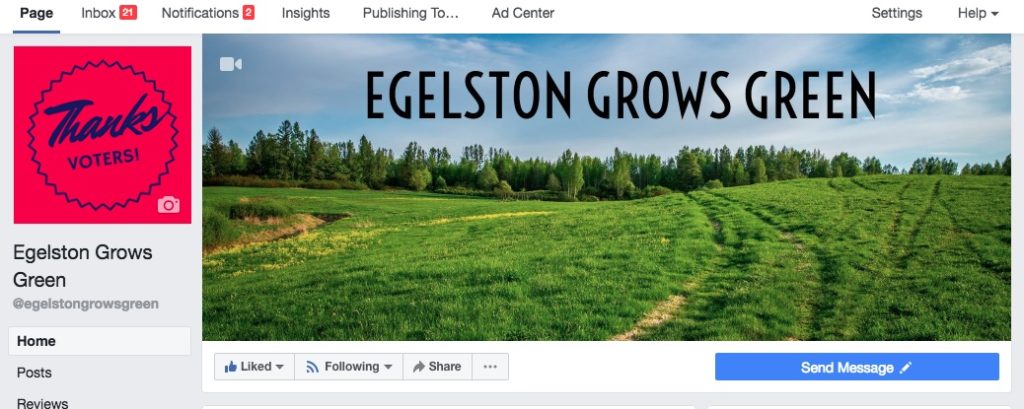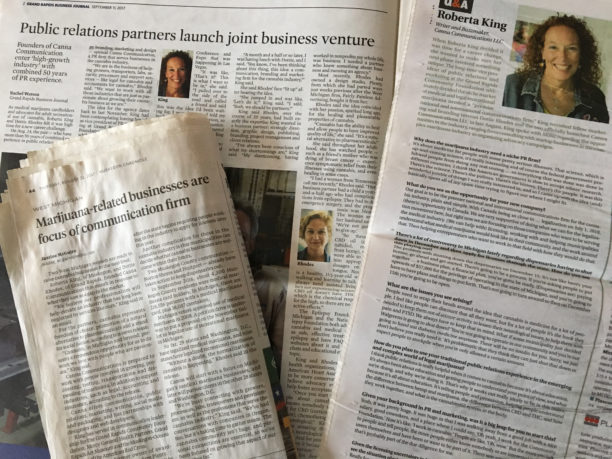There are so many good reasons to add email marketing to your cannabis business communication mix. Let’s take a closer look.
In 2016, there were 2.6 billion people using email and its expected that by 2020 email users will top 3 billion. Almost half of the people in the world use email to communicate—and you can be sure a few of them are cannabis business owners or consumers. So, by the numbers alone, email makes sense.
Business runs on email. If you’re a cannabis business wanting to communicate with other companies, email is one of the most certain avenues of communication.
People like getting emails from companies they do business with. About 85 percent of people surveyed said they like getting emails once a month and about 60 percent like weekly emails. And if you’re thinking of sending daily, twice or thrice a week emails, think again—those have approval ratings of about 11 percent. So if someone opts into getting emails from you, you can be sure that sending them once a week isn’t too much.
Another advantage to email marketing is that people are more likely to sign up for and open your email than they are to “like” or comment on a post on Facebook. Email has greater privacy and what goes on in that form of communication is between you and the company. Check out these some interesting statistics on the value of social media properties like Facebook, Twitter and email. Essentially, if you have 2000 followers on either platform and 2000 email contacts, you’ll get better results from a quality email—expect that just over 400 people will open your email. With Facebook, you’ll have about 120 views and with Twitter 40 people will see your message.
We’re not saying the social platforms aren’t great—they’re good for brand building and news sharing, but you know that Facebook isn’t cannabis-friendly and more than one marijuana business has been shut down or had its reach limited by restrictions. It’s important to select a vendor with policies that allow you to promote whatever cannabis business you have—keeping in mind that selling product is likely to grab the attention of monitors. There are a handful of companies that specialize in cannabis enews distribution, too. With them, you don’t have to be concerned about content issues.
No One Likes Spam
 Undoubtedly, you’re wondering about how to get 2000 email addresses, and you are also aware that spamming people is wrong. Is it illegal? It depends on what you are saying, how you came by the email address and your intention. Writing a subject line that is intended to deceive people is spam. Sending an email to someone you met at a networking event isn’t spamming. Using a bot to gather up email addresses and sending something to thousands of people you have no relationship with is spamming. People in your database will have the ability to opt out of your emails, so sending to them is fine. Most providers (like MailChimp) have all the anti-spam requirements built into the software. The FTC has a guide on the subject.
Undoubtedly, you’re wondering about how to get 2000 email addresses, and you are also aware that spamming people is wrong. Is it illegal? It depends on what you are saying, how you came by the email address and your intention. Writing a subject line that is intended to deceive people is spam. Sending an email to someone you met at a networking event isn’t spamming. Using a bot to gather up email addresses and sending something to thousands of people you have no relationship with is spamming. People in your database will have the ability to opt out of your emails, so sending to them is fine. Most providers (like MailChimp) have all the anti-spam requirements built into the software. The FTC has a guide on the subject.
Gathering and growing an email list takes time. Start with your customers and people you network with, create a signup pop up on your website. Ask people on your social pages and give them a link. Offer something for signups like a discount or a perk or just some outstanding content—a guide or other downloadable item that will be of interest. Make sure the sign up is in your email signature and on your site in a popup or other spot.
So, statistically, you know that you know emails aren’t a problem for people and you’ve built a list. Now you’ve got to figure out your content and delivery mechanism. There are a few different kinds of emails that can be sent for your cannabis business. They include:
- Promotional—where you’re promoting services or products
- Specials—when you have something new for your customers
- Welcome—a greeting and hello to people who sign up for your email
- Educational—telling people something you think they’d like to know
- Newsletter—what’s going on in your company
- Advice—helping people understand how to use something you sell or giving them other advice on an issue
Make sure to keep your articles and promotions short and link to your website after the first few sentences. Include images and GIFs that help emphasize your points. Find a style and stick to it—avoid using lots of fonts and colors—you don’t want to distract from your main message.
While We’re on the Subject
 One of the most important aspects of cannabis business email marketing is the subject line. What are you going to say to get people to open your message and act? Make it short around 65 characters, use emojis carefully and make it intriguing. If you wonder if it will work, do an AB test with your list. Send half of the messages with one subject line (a) the rest with another (b) and see which gets a better open rate.
One of the most important aspects of cannabis business email marketing is the subject line. What are you going to say to get people to open your message and act? Make it short around 65 characters, use emojis carefully and make it intriguing. If you wonder if it will work, do an AB test with your list. Send half of the messages with one subject line (a) the rest with another (b) and see which gets a better open rate.
If you have more questions about email marketing, give us a shout, and we’ll be happy to plan a strategy with you. And if you want to learn more about how communication can grow your cannabis business, take a moment to sign up for Canna Communication’s monthly enews.





 needs circulated air, specific food at certain times. You don’t want it to cross-pollinate with other plants and it’s vulnerable to a variety of issues that can ruin it. Killing a plant that is as valuable as cannabis is a mistake no grower wants to make. Growers also don’t want to create a sub-par flower. That’s a lot of pressure!
needs circulated air, specific food at certain times. You don’t want it to cross-pollinate with other plants and it’s vulnerable to a variety of issues that can ruin it. Killing a plant that is as valuable as cannabis is a mistake no grower wants to make. Growers also don’t want to create a sub-par flower. That’s a lot of pressure!
 the millions, you can’t beat the mainstream media for getting your message to people.
the millions, you can’t beat the mainstream media for getting your message to people.  Content creation is hard work, but it’s essential. Your website’s SEO and social media depend on new, original, relevant and fresh content—which can be blogs, videos or images. Ideally, you’ll create new content once a week, but that can be a struggle without ideas, a plan or professional help.
Content creation is hard work, but it’s essential. Your website’s SEO and social media depend on new, original, relevant and fresh content—which can be blogs, videos or images. Ideally, you’ll create new content once a week, but that can be a struggle without ideas, a plan or professional help. 


 One month before the election we helped the client with a succinct, clear message for yard signs and designed a postcard for voters. These collateral materials reinforced the singular importance of voting yes for medical marijuana zoning. The postcards were mailed to the 7500 voters in the township. The client also held a yard sign pick-up event with principals on-site to answer questions.
One month before the election we helped the client with a succinct, clear message for yard signs and designed a postcard for voters. These collateral materials reinforced the singular importance of voting yes for medical marijuana zoning. The postcards were mailed to the 7500 voters in the township. The client also held a yard sign pick-up event with principals on-site to answer questions. 

 Take time every day to read/watch/listen to cannabis news, especially regarding Michigan and cannabis as medicine. You expect expertise from businesses you patronize and your customers expect the same from you. You need to be able to help people understand the business of cannabis, too. Be accurate with your information and data, you don’t want to be the source of bad information. This acquired expertise will also help you as you connect with the media where your business is located.
Take time every day to read/watch/listen to cannabis news, especially regarding Michigan and cannabis as medicine. You expect expertise from businesses you patronize and your customers expect the same from you. You need to be able to help people understand the business of cannabis, too. Be accurate with your information and data, you don’t want to be the source of bad information. This acquired expertise will also help you as you connect with the media where your business is located. and images that you put on your website and on your social media pages. It needs refreshing regularly. High-quality content is an integral part of communication and marketing and while you’re selling something, you’re also helping people understand the why of what you’re doing. If you don’t have social media pages for your company, yet, get them established. You can do this long before your new marijuana business is open. It’s good to get your name out there, connect with people and practice your content posting habits.
and images that you put on your website and on your social media pages. It needs refreshing regularly. High-quality content is an integral part of communication and marketing and while you’re selling something, you’re also helping people understand the why of what you’re doing. If you don’t have social media pages for your company, yet, get them established. You can do this long before your new marijuana business is open. It’s good to get your name out there, connect with people and practice your content posting habits.
 there.This is where you explore your potential audiences, your competition, the landscape of legislation and how people are reacting to what you are doing. You can read articles on a topic you want to know more about, you can ask questions of people who are potential customers; you can do a Survey Monkey or a poll on Twitter or Facebook.
there.This is where you explore your potential audiences, your competition, the landscape of legislation and how people are reacting to what you are doing. You can read articles on a topic you want to know more about, you can ask questions of people who are potential customers; you can do a Survey Monkey or a poll on Twitter or Facebook.
 Want to learn more about public relations for your cannabis business and how to expand your reach? Let’s talk!
Want to learn more about public relations for your cannabis business and how to expand your reach? Let’s talk!
 consider how fast this has happened in Canada, really just three years since Prime Minister
consider how fast this has happened in Canada, really just three years since Prime Minister 
 businesses.
businesses. 
 Getting Ready to Grow Your Business Now
Getting Ready to Grow Your Business Now